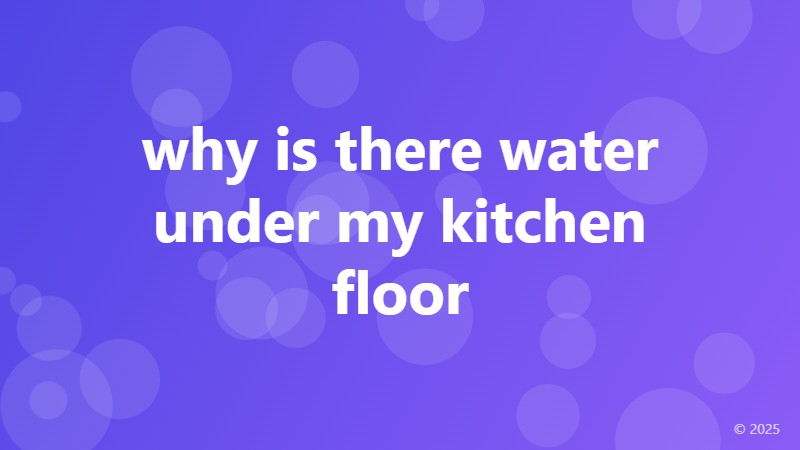why is there water under my kitchen floor

Uncovering the Mystery: Why is There Water Under My Kitchen Floor?
Have you ever walked into your kitchen, only to be greeted by a puddle of water seeping from beneath the floor? It's a frustrating and worrisome situation, especially if you're unsure of the cause. Water under the kitchen floor can lead to structural damage, mold growth, and even health risks if left unaddressed. In this article, we'll delve into the common reasons behind this issue and provide guidance on how to tackle it.
Potential Causes of Water Under Your Kitchen Floor
Before we dive into the solutions, it's essential to identify the underlying causes of the problem. Here are some common culprits:
1. Leaky Appliances: Dishwashers, refrigerators, and washing machines can all leak water onto the floor, which can then seep under the kitchen floor. Check the connections and hoses of these appliances for any signs of wear or damage.
2. Poor Drainage: If your kitchen floor is not properly sloped or if the drainage system is clogged, water can accumulate under the floor. Ensure that your kitchen floor is sloped slightly towards the drain to prevent water from pooling.
3. Pipe Leaks: Leaks in the pipes under your kitchen sink or dishwasher can cause water to seep under the floor. Check for any signs of moisture or water damage around the pipes and connections.
4. : Cracks in the foundation of your home can allow water to seep in and accumulate under the kitchen floor. This is a more serious issue that may require professional attention.
5. High Humidity: High humidity levels in your kitchen can cause condensation to form on the pipes and floors, leading to water accumulation. Ensure good ventilation in your kitchen, especially during cooking and washing activities.
What to Do If You Find Water Under Your Kitchen Floor
If you've discovered water under your kitchen floor, here are the steps to take:
1. Turn off the Water Supply: Immediately shut off the main water supply to prevent further damage.
2. Contain the Damage: Use towels, mops, or a wet/dry vacuum to remove as much water as possible from the affected area.
3. Identify and Fix the Source: Determine the cause of the water accumulation and address it promptly. This may involve repairing or replacing faulty appliances, pipes, or fixtures.
4. Dry the Area: Use fans and dehumidifiers to dry the area completely, paying attention to any hidden spaces or crevices where moisture can accumulate.
5. Monitor for Mold and mildew: Keep an eye out for any signs of mold or mildew growth, and address them promptly to prevent further damage and health risks.
By following these steps and addressing the underlying causes of water under your kitchen floor, you can prevent further damage and ensure a safe, dry, and functional kitchen space.